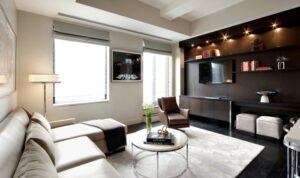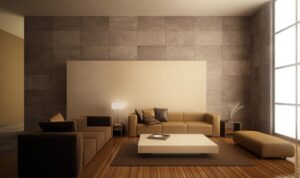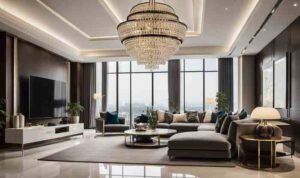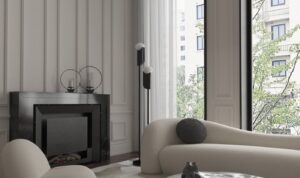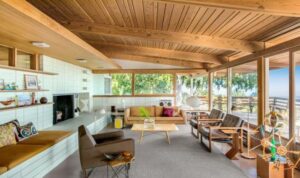Delving into luxe interiors and design, this introduction immerses readers in a unique and compelling narrative. Luxe interiors are the epitome of sophistication and luxury, redefining the essence of modern architecture and interior design. From high-end materials to exquisite color schemes, each element contributes to creating a lavish ambiance that is both captivating and inspiring.
As we journey through the key elements, furniture and decor, and various architectural styles of luxe interiors, we uncover the essence of opulence that defines these spaces.
Introduction to Luxe Interiors and Design
Luxurious interiors and design, often referred to as "luxe," embody elegance, sophistication, and opulence. These spaces are meticulously curated to exude a sense of grandeur and exclusivity, incorporating high-quality materials, exquisite craftsmanship, and lavish finishes.In modern architecture and interior design, luxe interiors play a significant role in setting the tone for a space.
They create a sense of luxury and comfort, elevating the overall aesthetic appeal and ambiance of a room. Luxe interiors are not only visually stunning but also reflect the owner's taste, style, and personality.Some key elements that define a luxe interior include plush furnishings, intricate detailing, statement lighting fixtures, rich textures, and a harmonious color palette.
These elements work together to create a cohesive and visually striking space that invites admiration and awe.
Elements of Luxe Interiors
- Plush Furnishings: Luxe interiors often feature sumptuous upholstery, velvet sofas, and silk draperies that add a touch of luxury and comfort.
- Intricate Detailing: From intricate moldings and ornate carvings to bespoke cabinetry and custom millwork, intricate detailing is a hallmark of luxe interiors.
- Statement Lighting Fixtures: Chandeliers, sconces, and pendant lights serve as focal points in luxe interiors, adding drama and sophistication to the space.
- Rich Textures: Luxe interiors incorporate a mix of textures such as silk, cashmere, marble, and metallic finishes to create depth and visual interest.
- Harmonious Color Palette: A harmonious color palette featuring rich jewel tones, metallic accents, and neutral shades enhances the luxurious feel of a space.
Key Elements of Luxe Interiors
Luxury interior design is characterized by the use of high-end materials, impeccable craftsmanship, and attention to detail. Let's delve into the key elements that contribute to creating a luxurious ambiance in interior spaces.
High-End Materials
Marble, brass, and velvet are staple materials in luxe interiors, known for their opulence and sophistication. Marble is often used for countertops, flooring, and statement pieces, adding a touch of elegance to any space. Brass fixtures and accents bring a warm, luxurious feel, while velvet upholstery and drapery exude luxury and comfort.
Importance of Lighting Design
Lighting design plays a crucial role in setting the mood and ambiance of a space. In luxe interiors, the right lighting can highlight architectural features, create a sense of drama, and enhance the overall aesthetic. Chandeliers, sconces, and strategically placed lighting fixtures are commonly used to add a touch of glamour and luxury to the design.
Color Schemes in Luxe Interior Design
Color schemes are carefully curated in luxe interior design to evoke a sense of luxury and sophistication. Rich, deep hues like navy, emerald green, and burgundy are often used to create a lavish and inviting atmosphere. Metallic accents in gold, silver, or bronze can add a touch of glamour and opulence to the color palette, enhancing the overall luxurious feel of the space.
Furniture and Decor in Luxe Interiors

Luxury interiors are often characterized by high-quality furniture pieces that exude sophistication and elegance. These furniture items are not only functional but also serve as statement pieces that elevate the overall aesthetic of a space.
Characteristics of Furniture in Luxe Interiors
- Rich Materials: Luxe interiors feature furniture crafted from high-quality materials such as fine woods, marble, brass, and leather.
- Attention to Detail: Intricate carvings, ornate embellishments, and exquisite craftsmanship are key elements of luxury furniture design.
- Elegant Silhouettes: Furniture in luxe interiors often boasts elegant and refined silhouettes that showcase a sense of timeless beauty.
- Customization: Custom-made furniture pieces tailored to the owner's preferences and requirements are commonly found in luxurious spaces.
Decorative Items in Luxe Interiors
Decorative items like artwork, sculptures, and statement lighting fixtures play a crucial role in enhancing the luxury of a space by adding visual interest and personality. These items serve as focal points that draw attention and create a sense of refinement and exclusivity.
Iconic Furniture Pieces in Luxe Design
-
Eames Lounge Chair and Ottoman:
This iconic piece, designed by Charles and Ray Eames, is synonymous with luxury and comfort, featuring a sleek silhouette and premium leather upholstery.
-
Tulip Table by Eero Saarinen:
The Tulip Table is a timeless piece known for its minimalist design and sculptural base, making it a favorite in upscale interiors.
-
Barcelona Chair by Ludwig Mies van der Rohe:
This classic chair, with its clean lines and luxurious leather upholstery, is a symbol of modern elegance and sophistication.
Luxe Interiors in Different Architectural Styles
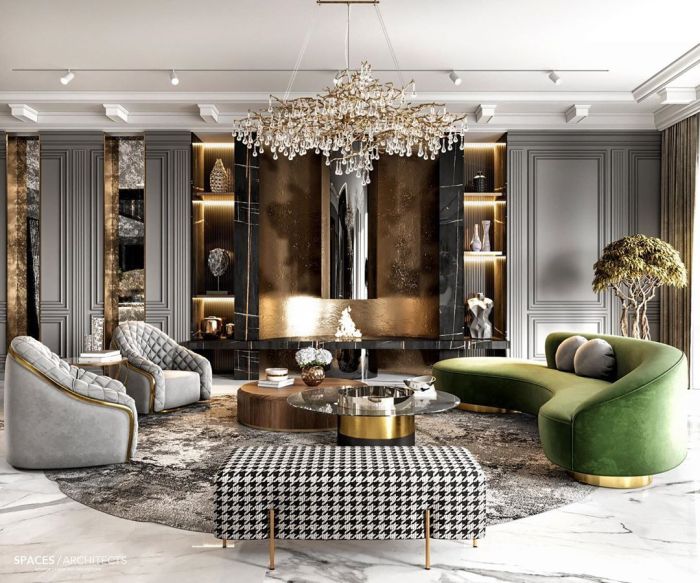
When it comes to luxe interiors, they can be seamlessly integrated into various architectural styles such as modern, minimalist, or traditional. Each style presents unique opportunities to showcase luxurious elements while maintaining the overall design aesthetic. Let's explore how luxe interiors are adapted to different architectural styles, compare and contrast the use of luxe elements in each, and analyze how they can be incorporated into historic or heritage buildings.
Modern Architectural Style
In modern architectural styles, luxe interiors often feature sleek lines, open spaces, and a focus on minimalism. Luxurious elements such as high-end materials like marble, brass, and glass are commonly used to create a sense of sophistication. Neutral color palettes with bold accents are also prevalent in modern luxe interiors, adding a touch of elegance to the space.
Minimalist Architectural Style
Minimalist architectural styles emphasize simplicity and functionality, making luxe interiors in this style all about clean lines and uncluttered spaces. Luxe elements are used sparingly but strategically, such as statement lighting fixtures, plush textiles, and carefully curated artwork. The key is to highlight quality over quantity, ensuring that each element stands out in its own right.
Traditional Architectural Style
In traditional architectural styles, luxe interiors often reflect a sense of opulence and grandeur. Rich textures, ornate details, and intricate designs are common features in these spaces. Luxurious elements like velvet upholstery, ornamental moldings, and antique furniture pieces are used to create a sense of timeless elegance.
The color palette in traditional luxe interiors is often rich and warm, adding to the overall luxurious feel of the space.
Incorporating Luxe Interiors into Historic Buildings
When incorporating luxe interiors into historic or heritage buildings, the key is to strike a balance between preserving the original architectural elements and introducing modern luxury touches. Careful restoration and thoughtful design choices can help blend the old with the new seamlessly.
Luxe elements can be added through custom millwork, bespoke furniture pieces, and tasteful lighting fixtures, enhancing the historic charm of the building while bringing a touch of contemporary luxury.
Ultimate Conclusion
In conclusion, luxe interiors and design offer a glimpse into a world of refinement and elegance. The seamless blend of high-end materials, meticulous lighting design, and iconic furniture pieces crafts a narrative of luxury that transcends time and trends. Whether incorporated into modern or traditional architectural styles, luxe interiors continue to inspire awe and admiration, making them a timeless symbol of sophistication.
Q&A
What defines luxe interiors and design?
Luxe interiors are characterized by the use of high-end materials, luxurious color schemes, and meticulous attention to detail that create a sophisticated and lavish environment.
How does lighting design impact luxe interiors?
Lighting design plays a crucial role in setting the ambiance of luxe interiors, highlighting architectural features and creating a sense of warmth and luxury.
What are some iconic furniture pieces in luxe design?
Iconic furniture pieces like the Barcelona chair, Eames Lounge Chair, and Tulip Table are synonymous with luxe interior design, adding a touch of timeless elegance to any space.

